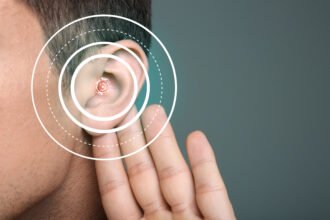I (Dov Michaeli here) recently came across a great article in the PEERtrainer website, explaining what inflammation is all about, and what can be done about it. I especially liked the road-accident metaphor. The article is long, so we’ll post it in 3 consecutive installments.
I (Dov Michaeli here) recently came across a great article in the PEERtrainer website, explaining what inflammation is all about, and what can be done about it. I especially liked the road-accident metaphor. The article is long, so we’ll post it in 3 consecutive installments.
Written By Brian Rigby, Edited By Jackie Wicks , PEERtrainer Founder
Both the causes of inflammation, and the specific dangers of inflammation have been poorly understood from a scientific perspective. But this is changing.
Inflammation is now understood as playing a crucial role in moderating many chronic diseases of lifestyle. Despite this, there is a lot of confusion as to exactly what causes inflammation, and what we can do to reduce it.
This article will discuss the latest science and research, and also provide some practical advice that you can put to immediate use!
Inflammation is very well-defined by specific factors, and if you understand what these factors are and, more importantly, why they are associated with inflammation, then you are better equipped to make choices which reduce inflammation.
Inflammation is not a catch-all phrase for a lack of health, nor is it a result of unknown factors–there are very specific reasons why the actions we make in our daily lives lead to a state of chronic inflammation, just as there are specific mechanisms by which we may reduce inflammation.
What Causes Inflammation?
The first thing which must be addressed is why we get inflammation at all, and how short-term acute inflammation differs from chronic inflammation.
Inflammation is the body’s natural response to injury. Although the symptoms of acute inflammation are unpleasant, they are necessary for the healing processes the body goes through. The characteristic symptoms are pain, redness, heat, swelling, and loss of mobility.
If an ailment ends with the suffix “itis”, it is a form of inflammation. For example, arthritis comes from arthro, meaning joint, and itis, meaning inflammation. Thus, arthritis is inflammation of the joints.
What Is Acute Inflammation?
Acute inflammation is a short-term process, only 24-48 hours in length, and it is characterized by increased neutrophil (a type of white blood cell) activity. The basic idea behind inflammation is that our body increases blood flow to the injured area (increasing redness and heat) and increases permeability of our blood vessels so our immune system may enter the damaged tissue (which also allows plasma in, causing swelling).
The compound which helps our body increase blood flow and permeability, called bradykinin, also binds to our pain receptors, letting us know the area is injured. Our immune system goes to work, destroying any invading pathogens and removing debris. When finished it departs, taking the inflammation with it.
What Is Chronic Inflammation?
When inflammation doesn’t go away, it is known as chronic or systemic inflammation, and it is no longer a pro-healing response, but rather a symptom that something has gone wrong. It can be hard to diagnose chronic inflammation because it doesn’t usually affect parts of our body we can see or feel.
While the overt symptoms may be missing, it is still characterized by the same general immune response, but one which has gone overboard and is no longer healing the body. Whereas acute inflammation is characterized by neutrophils, chronic inflammation is characterized by two other types of white blood cells: monocytes and macrophages.
The Chemistry of Chronic Inflammation
To understand why chronic inflammation happens, some of the biochemical processes leading to all inflammation must first be understood. If there is one thing to take away from this section, it is that the four proteins listed below play key roles in our immune response. While we may not understand the full relationship they have to chronic inflammation, they are known factors which act as biomarkers and lead to a chronically inflamed state.
1. Tumor Necrosis Factor alpha (TNFα):
TNFα signals to the body to bring the neutrophil white blood cells to the site of infection or injury. TNFα is known as a cytokine, or a cell-signalling protein. Cytokines are messengers very similar in function, but not identical, to hormones.
TNFα acts like a “first responder” at an accident–it signals to the body where the most damage is so that the immune system can send the right response, which is to send neutrophils, which act like EMTs and firemen, clearing wreckage to reach the injured and carting them away in ambulances.
2. Nuclear Factor kappa B (NFkB):
NFkB works like a switch for certain genes. When NFkB is allowed to enter the nucleus, which it does through the aid of TNFα, it turns on the genes which allow cells to proliferate, mature, and avoid destruction through apoptosis (programmed cell death). This allows white blood cells to replicate and do their job in cleaning up the infected or injured area. NFkB is a transcription factor protein complex.
NFkB is similar to the priority setting on a communications line–it opens all channels available for the quickest response. When NFkB is turned on, EMTs, police, and firemen will continue to flock to the scene of the accident. When NFkB gets turned off, they stop coming and start to leave.
3. Interleukin-6 (IL-6):
IL-6 dictates the neutrophils to destroy themselves and draws monocytes, another type of white blood cell, to the infected or injured area instead. The monocytes create macrophages which clean up the debris and pathogens through phagocytosis, the process by which macrophages eat dead cells and other particles whole. IL-6 is also a cytokine (a messenger), like TNFα.
IL-6 acts to call in the road crew to clean up the debris from an accident and oversees the progress. As the road gets closer to being completely clear, IL-6 sends the cleaners, police, and anybody left at the scene of the accident away and ultimately declares the road open once again.
4.C-Reactive Protein (CRP):
CRP is produced by the liver in response to IL-6 levels and binds to the surface of dead and dying cells, and also to certain forms of bacteria. CRP acts as a form of signal for the macrophages to ingest something through phagocytosis, and thus helps in the ultimate clearing of debris during inflammation. CRP is a “pattern recognition receptor” protein, which means it marks recognized debris for removal.
CRP acts like the paint a logger marks trees to harvest with–it’s a sign that this tree is okay to remove but that one isn’t. Without CRP, it would take our body a lot longer to figure out what it ought to remove and what it ought not.
Why Understanding The Chemistry Is Important:
Imagine that inflammation is a multi-car pileup on a highway. The first trained people to arrive on the scene, TNFα’s, look through the wreckage to find any immediate hazards, locate injured people, and open all lines of communication so the accident response is fast and strong. The next people to arrive are the firemen and EMTs, the neutrophils, which begin to pry open cars and move the injured into ambulances.
The most important work is done by the neutrophils, but the road is still cluttered with debris and broken glass, so once they finish IL-6 calls in the road cleanup crew, in the form of monocytes and macrophages. They dutifully scour the scene, removing every last bit of broken glass and shredded tire until the road is clear.
They know which objects are debris and which aren’t because CRP has gone through and tagged the debris, making the cleanup fast and efficient. Once the road is clear, IL-6 declares the road reopened and dismisses the road crew plus anyone else remaining at the scene of the accident. This is how acute inflammation works: it is a fast, efficient process which repairs and cleans damaged areas and then leaves.
How Chronic Inflammation Is Different From Acute Inflammation
The story is somewhat different with chronic inflammation. Imagine the same road, but no accident. The first responders were called to the scene but they can’t find any wreckage or injured people. Nonetheless, they dutifully open all lines of communication so that other responders may come. The firemen and EMTs never arrive because there is no damage, but IL-6 still calls in the road crew to clear away the nonexistent debris. CRP is also present, trying to locate debris to tag for cleanup.
Even though there is no accident, the road starts to function less well. At first, only one lane is shut down, but as first responders and the road crew grow more numerous, and the lines of communication remain always open, the road becomes progressively more clogged. Eventually, the road starts to be damaged by the very presence of the first responders and road crew!
Chronic inflammation has set in, and the best way to get rid of chronic inflammation is to give your body the tools to clear away the unnecessary first responders, road crew, and other excess responses. Without reducing levels of TNFα, NFkB, IL-6, and CRP, the road stays “dysregulated” and dysfunctional.
Many factors can cause a dysregulated immune response and lead to chronic inflammation. Some are genetic, and cannot be changed. More often, however, they are lifestyle factors, and completely changeable. Today, the biggest factor is weight–excess fat tissue leads to chronic inflammation.
Following weight, food is the next biggest factor, not just what we eat but what we should be eating. Smoking is a significant source of inflammation as well. After these factors, UV radiation, stress, and environmental toxins such as pesticides can be sources of inflammation as well.






